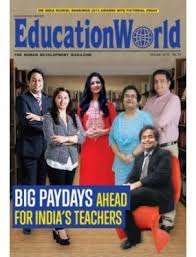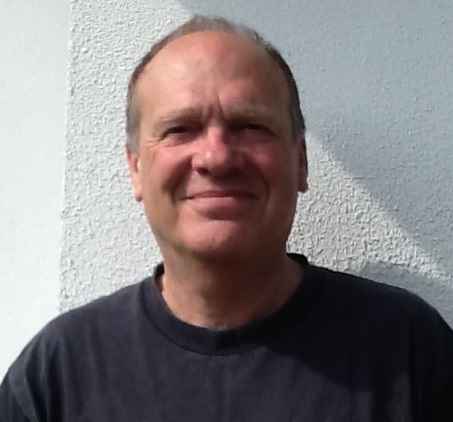- Learning
A Conversation with Kelly Bean
Associate Dean, Executive Education, UCLA Anderson School of Management
Frameworks for Breaking Down Complexity
“What gets me out of bed in the mornings is the feeling I get when something really clicks, maybe just a single session, but it helps the client grow - towards their organizational goals but also as leaders and people.” says Kelly Bean at UCLA’s Anderson School of Management.
“A lot of what I do, or try to do, is to inspire people with a vision: internally by trying to get everyone aligned around doing our best work for the client; externally, that’s getting the various stakeholders in a client organization fired up and on point as the learning journey unfolds.”
Along with this emotional component – which is always key to success with any programming – is a clear vision to provide organizations and their leaders with the conceptual clarity needed to meet the challenges they face in an increasingly complex world is central to the approach championed by Bean.
She suggests that a failure to adapt to the vastly increased complexity at work played a big part in the various leadership debacles, from Enron on, that have plagued the past fifteen years and in the consequent collapse in public trust in business leaders.
In a world beset with multiple economic, environmental, and social problems that cut across national boundaries, it is the business community rather than governments that are most able to provide solutions. So rebuilding public trust and reenergising the corporate world to take on these macro challenges is critical, and key to this is equipping business leaders to operate effectively based on a strong sense of purpose, a clear vision for their business as a whole, combined with a deep understanding of who they are as leaders and how that personal leadership style can best serve the enterprise. This is where business education can play a vital role, says Kelly Bean.
Bean took up her appointment as Assistant Dean of the school's Office of Executive Education in 2007, and quotes her experience in taking over, in that pivotal year, when not only was the business world in trauma but the school’s revenues were just about to fall off a cliff. She spoke to a wide range of stakeholders in the executive education ecosystem; to CEOs, faculty, students and her peers at other business schools to get a better perspective on the task ahead.
She realised that previously executive education at UCLA Anderson, as elsewhere, had focused too much on developing technical skills and functional management practises and had been poor at explaining how they fit together as a whole. Hence she was able to identify a key opportunity that could replace lost revenues with a new stream of business based upon expanding and deepening the leadership capabilities of the school's individual and corporate clients. The goal of this new work would be to provide the support she saw leaders now needed to “make complexity more workable.”
With this goal in mind, over the subsequent eight years, Bean and her team have evolved a series of frameworks to help clients and individual learners break down complexity. They approach their work from three main lenses: the individual learner lens; the organizational lens; and the design lens.
To engage with the individual learner, Bean and her team have developed the Bruin Benchmark – a framework to help individuals focus on the core capabilities required to keep pace with today’s dynamic business context.
When engaging on talent issues at the organizational level, Bean often calls upon the UCLA Leadership Map. Three core questions were emerging from Bean’s conversations with clients around the globe: Are future leaders prepared to…lead the sustainable organization? Leverage diverse perspectives? Actualize innovation to create value? Bean used these questions to create the Leadership Map, helping organizations understand the distribution of key capabilities among its people, and functions as a call to action – Are you focusing on the right capabilities to move your people to the sweet spot?
When designing a learning experience – either for the individual learner or the broader organization – UCLA Executive Education sometimes draws upon their ACT model to communicate that learning is a process, not an event. This three-phase model – Adapt, Catalyze and Transform – is designed to create a path for learning. Adapt represents the phase of preparing for learning including activities such as reflection, research and self-assessments. Catalyze represents the phase of acquiring new tools for personal and team effectiveness. And Transform represents the phase of bringing it all together, delivering measurable results not just for your organization, but also for your own personal growth and development.
At the end of the day, Bean and her team view leadership development as a personal journey. These three frameworks feed into a design and development process that combines the best in breed management tools organizations might expect, with the deep dive into leadership capabilities that they actually need in order to refresh their corporate culture and drive their business forward.
The question is ‘do senior leaders get it?’ and how are companies responding to initiatives that aim to move them away from traditional ‘command and control’ to inclusive collective forms of leadership, and introduces them to new ideas around leadership that involve self-awareness, allowing time for reflection on strengths and challenges, fostering innovation, and embracing diversity.
One potential barrier is demographic. Many of today’s senior leaders, mentored themselves by command and control managers, do not fully appreciate the benefits of a move to a more collective, empowering, leadership culture. However over the next five years, as a new more open-minded and entrepreneurial generation of leaders takes the reins, Bean believes that many more organizations will seek to adopt new perspectives on leadership and management better adapted to the global digital business environment.
A second difficulty is around the capacity to remain engaged. Organizations, perhaps undergoing transformational change, as well as individual leaders pursuing personal development, need to stick to the task. And this can be a significant challenge in fast changing highly connected business environments. Individuals and organizations alike are prone to ‘falling off the wagon’. “They can start off open to change, be hit a crisis or just realise how difficult change can be, then fall out.” says Bean.
She firmly believes that business education can make a profound difference for individuals and organizations – but they have to stay the course. She says that UCLA has addressed the issue of maintaining engagement through the way programs are developed and delivered. On custom programs, which typically run for a year, often after the third module, at seven months, there is a dip, and senior leaders start to question whether they should carry on. To address this only too human reaction, the program allows structured opportunities for reflection, feedback, and discussion in an effort to press the refresh button.
The issue often comes from a client wanting a defined answer or an off-the-peg solution, and the School saying “we can’t give you that.” According to Bean, executive education is about discovery, and a journey through which the client finds their own way to a changed mind-set and a transformed corporate culture; a process of collaboration between the client and the School over time and through continual executive learning.
Another blocker comes from perceived time pressure and the client saying they do not have time to complete the program. To which the response is that leadership development is about building trust, both trusting your employees and them trusting your judgement, which in turn can build leaders’ confidence to step back and delegate effectively. This is critical as it then enables leaders to focus on their key role, creating time for reflection, learning and strategic thinking.
Innovation is a big driver of business growth; and an important aspect in changing corporate culture is creating of a communicative open environment that encourages innovation, eliminates the fear of failure, and broadens the lens beyond that particular industry or sector to embrace new perspectives. To stimulate this, the School encourages clients to experience other business environments. One example of this was when an auto insurance company was taken to a boutique hotel group to help them understand great customer service. In another example they took a shopping mall operator to the San Francisco 49ers football stadium to see how a huge property asset had been able to successfully compete for people’s time.
Assessing the general health of the executive education sector, Bean suggests it is currently in good shape. Certainly UCLA has seen significant growth over the past two years – 20-30% which is now levelling off to 5-10%. However in her experience the ‘industry’ is cyclical and at this point in the current cycle it is experiencing a considerable amount of consolidation (e.g. Korn Ferry acquiring the executive development firm Pivot Leadership in February 2015).
Kelly Bean is concerned about the ability of L&D people in organizations to carry forward and implement executive development initiatives, for which providers can often only be a catalyst. She believes the ‘industry’ should help in developing developers and try to build ongoing support for L&D professionals in their efforts to align their people and build momentum behind the development initiatives within their organizations.
A future challenge for executive education providers will be how to support the 70% of future leaders that the 2014 Deloitte Millennial survey found would ‘reject traditional business to work independently.’ Business schools while welcoming this entrepreneurial spirit need to rethink how they engage with upcoming generations. UCLA is starting to meet this challenge itself through its innovative EDGE program, which offers groups of 30 to 40 undergraduates and recent graduates three intensive weeks’ teaching, from UCLA’s world renowned faculty. The program introduces them to essential business and leadership skills that will be invaluable wherever their careers may take them.
As far as the challenges facing UCLA Executive Education, Bean points first to the problem of scale. She sees UCLA as a specialist ‘boutique’ provider, with a prowess in custom program design and delivery. She and her team have developed a successful approach to program design that features: “a purposeful, intentional, blend of development, assessment, and faculty interaction…” that remains flexible enough to accommodate small just-in-time innovations and marginal gains as programs progress through the year. While not seeking to build the business to the size of the largest providers, the challenge now is to scale-up while still retaining this intense tailored experience for the client.
Other challenges for the School are largely around building the capability to take advantage of several opportunities for growth. Digital connectedness presents opportunities for the School to reach out to broader audiences and to enrich their existing offer. The next cycle in executive development will undoubtedly be biased towards online learning, which is already good at knowledge transfer. The current challenge is to leverage online to offer truly engaging executive development.
Bean also believes that digital connectivity will enable the spread of learning to deeper levels within organizations and here she feels lies a big opportunity for UCLA. Already experts at delivering sophisticated customized executive programs, equipped with new digital tools, the School will be exceptionally well placed to deliver learning to all levels of organizations and to generate company-wide cultural transformation - a transformation that so many need if they are to operate to their true potential in an ever more complex business world.
This article was originally published in Developing Leaders: Issue 19
ARTICLES YOU MIGHT LIKE
VIEWPOINT
For Thomas Misslin, transformation rather than training is the aim of executive education at emlyon business school
DEVELOPING LEADERS QUARTERLY MAGAZINE AND WEEKLY BRIEFING EMAILS

































